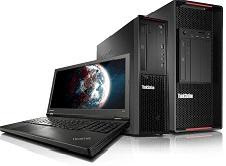Grundig IT Newsletter
Computing News That You Can Use – April 2022
When to replace Workstations, Laptops and Software?

Quote of the Month
“Change is the law of life. And those who look only to the past or present are certain to miss the future.” —John F. Kennedy
When is your business computer or laptop too old? New tech is constantly in development, and older tech becomes obsolete. Do you really need to constantly strive for the newest, hottest hardware and software? Or should you just keep your old system for as long as possible to save on costs? The answer, like many things, is somewhere in the middle of those two extremes.
Most manufacturers update their computer lineup each year and some software (like tax and financial software) updates every single year. Some software updates every few years. So when exactly is it best to upgrade? Last month, we already talked about what this means for a lot of cloud-based applications and desktop applications such as QuickBooks, but what about everything else? More on this below.
So, when do you actually NEED to buy a new computer? The answer here is a simple one, but not an easy one. Does it work? How long will it work? Is it a risk? Most desktop computers in a business environment will last between 3-5 years before needing replacement, which is why we suggest implementing, at a minimum, a 5-year plan for upgrading your workstations – replacing at least a fifth of your computers each year. Laptops tend to break, wear out and slow down faster and usually need replacing in 3-4 year intervals.
In most cases, it is best not to use a computer until it breaks. While simple logic could imply that you will get the greatest value of your machine and spend less money overall, lost downtime during an unplanned replacement costs time and money. It also ignores the efficiency loss experienced with a slow computer. It’s much better to replace a computer early than to have to run a week or two without it while you scramble for a replacement. Look at your setup, and think to yourself, “How much trouble are we in if this computer turned into a brick?”. Avoiding downtime is usually the most important factor.
In a pinch, it is still possible to go to Best Buy and purchase a replacement, but there’s no guarantee that you’ll get the exact model or specifications you want or need. It will also still need the Pro version of the OS to join a domain, which is necessary in most cases, and this will require additional time and expense to apply. So it is best to plan ahead and order exactly what is needed instead of having to react in an emergency.
A concern that is also important is the computer’s speed and usability. Replacing the oldest machine in your business with a newer, faster model will likely increase productivity. A few decades ago, a solid state drive was the newest, coolest thing in tech. Then it became common, then it became standard. If you have any computers still running older, slower mechanical hard drives, the speed and reliability increase of switching to those with SSDs will be immediately noticeable. More RAM, newer processors and faster network connections are also possible with newer models.
Even if a workstation or laptop had decent specifications at the original time of purchase, older machines will continue to wear out and slow down over time. Adhering to a regular upgrade cycle mitigates these issues in any business environment.
What about software?
Most software updates are much easier and cleaner than migration to a new hardware. It is not always necessary to plan in advance to upgrade older software. However, it’s good to review all software periodically and to plan for replacement of software that is obsolete or at risk of losing compatibility with specific services, such as email. Microsoft 365 email, in particular, is only supported on more recent versions of Office (and Outlook). Before upgrading any software, always consider first if it will be compatible with the existing system and consider replacement of the hardware first, if necessary.
We are happy to answer any questions you have about the risks and rewards of cloud-migrating your applications. Feel free to reach out with any questions!
Tom Grundig – 925.528.9081 – tom@grundigit.com
